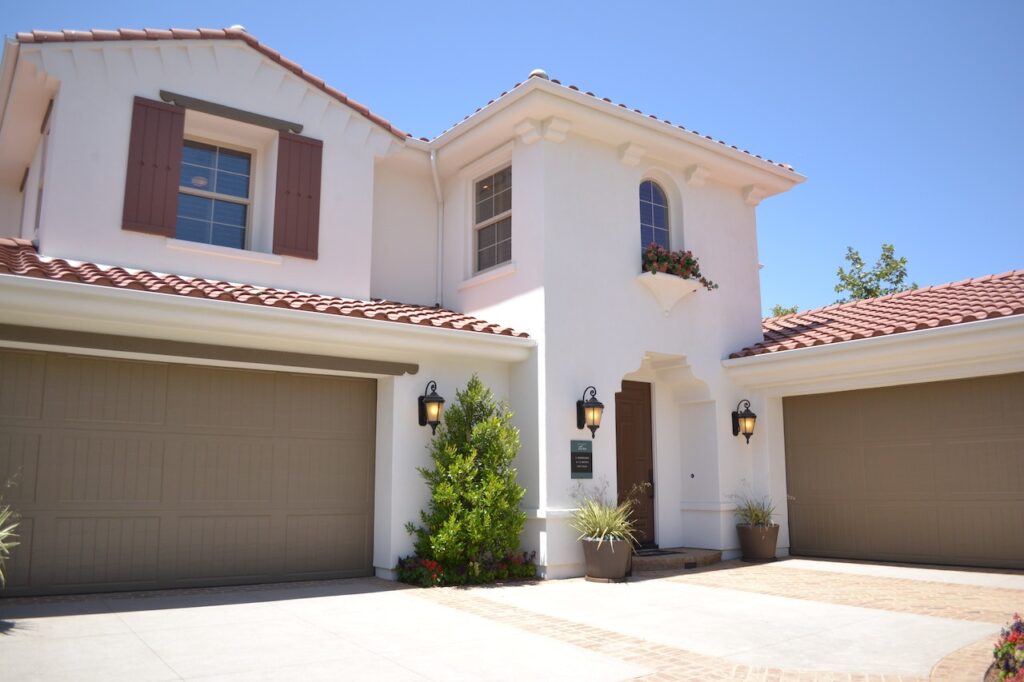Preface
The exterior is the first impression of a house. And the exterior entails the entire outside of the structure, not just the facade. If the exteriors are not impressive enough, the house will get a thumbs down by passersby’s and visitors alike no matter how well maintained and good looking the interiors are. Therefore, keeping an eye on whether your exterior paint has aged and needs redoing is very important. We spoke to Todd at Bel Air Gutter and Siding, who has immense knowledge about paint work too, to get more information on this.

The Signs
Fading Color: If the exterior paint color has faded significantly, losing its vibrancy and richness, it’s a clear indicator that it’s time for a fresh coat of paint.
Peeling or Cracking Paint: Peeling, cracking, or flaking paint is a sign that the current paint layer is failing and no longer protecting your home’s exterior surfaces.
Chalking: If you notice a powdery substance on your hand when you run it across the painted surface, it indicates that the paint is deteriorating and needs attention.
Water Damage: Water stains, mold, and mildew on the exterior walls can be signs of water infiltration, which can damage the paint and the underlying structure.
Wood Rot or Decay: If you have wooden siding or trim, signs of rot or decay indicate a need for immediate attention to prevent further damage.
Worn or Faded Areas: Areas that are exposed to high traffic, weather, or direct sunlight may wear faster. If these areas look significantly different from the rest of the exterior, it might be time for repainting.
Top Factors to Consider
Preparation: Proper preparation is crucial. This includes cleaning the surface, repairing any damage, and ensuring a smooth base for the new paint.
Color and Finish: Choose a color that complements your home’s architecture and surroundings. Consider the finish too; matte finishes hide imperfections, while glossier finishes are easier to clean.
Quality of Paint: Invest in high-quality paint. While it might be more expensive upfront, it will last longer and provide better protection against the elements.
Climate and Weather Conditions: Consider your climate. Harsh weather conditions, extreme temperatures, and high humidity can impact the durability of the paint.
Surface Material: Different materials require different paint types. For instance, wood, stucco, and metal may need specific paint formulations for optimal results.
Professional vs. DIY: Painting the exterior of a house is a significant undertaking. Depending on your skill level and the scale of the project, you might decide to hire professional painters.
Budget: Set a realistic budget that includes the cost of paint, materials, and labor (if hiring professionals). Don’t forget to include potential unforeseen expenses.
Timing: Choose a suitable time of the year for painting. Avoid extreme temperatures, high humidity, and rainy seasons.
Permits and Regulations: Some areas may have restrictions on exterior colors or may require permits for painting. Check with local authorities before starting.
Landscaping and Furniture: Consider protecting your landscaping and outdoor furniture. Cover or move them away from the painting area to prevent damage.
Curb Appeal: Remember that the exterior of your house is the first thing people see. A well-painted exterior enhances curb appeal and can increase the value of your property.
Long-Term Maintenance: Think about how easy it will be to maintain the new paint. Certain colors and finishes might require more frequent touch-ups.
Summary
Repainting the exterior of your house is an investment that not only enhances its appearance but also protects it from the elements. Regular maintenance and timely repainting can significantly extend the lifespan of your home’s exterior surfaces, keeping it looking fresh and well-maintained for years to come.
